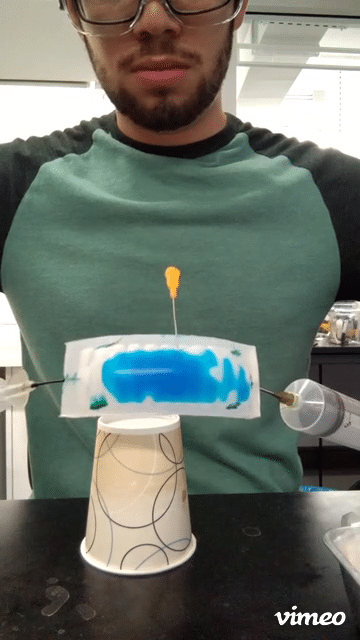Soft Robots (PneuNets)
Cornell Organic Robotics Lab
Oct 2016 - May 2017
During my sophomore year at Cornell University, I worked on some proof-of-concept projects for a PhD candidate in the Cornell Organic Robotics Lab. I designed molds for small starfish-inspired gripper, casted the grippers in my 3D printed molds using Ecoflex-30 silicone resin, and tested their strain and shape deformation when inflated. The second project I worked on was developing a simple multi-layered actuated PneuNet robot. The goal was develop a soft robot where the actuation of each layer is distinct and could be easily perceived when inflated.
The term “PneuNet” refers to the network of pneumatic channels that are inflated in the silicone soft robots. The bottom face of these soft robots are embedded with an inextensible mesh which results in a strain-limiting layer. This is what allows us to control the shape change of the silicone when inflated.
Starfish Gripper
When air is injected into the channels, the arms of the gripper inflated and curve downward towards the center of the gripper. A small cup geometry is placed under the center of the starfish gripper to help show the degree of strain / shape change of these grippers.
Multi-layered actuated PneuNet
This was a proof-of-concept project to see to what degree each layer can be actuated when inflated simultaneously. The first actuatable layer is the shape change layer, which has perpendicular branching channels. This causes the bar geometry to curve downwards. The second actuatable layer is a pattern layer which has “zero-volume” channels that are only visible when inflated. The pattern is a zig-zag line with circles at the vertices. The third layer is also a zero-volume channel, however, it is just a pocket where colored water that helps visualize the circle pattern. The capacity to actuate a multi-layered soft robot and have significant amounts of shape change to the layers individually is attractive as it is a stepping stone to more complex silicone soft robots.









